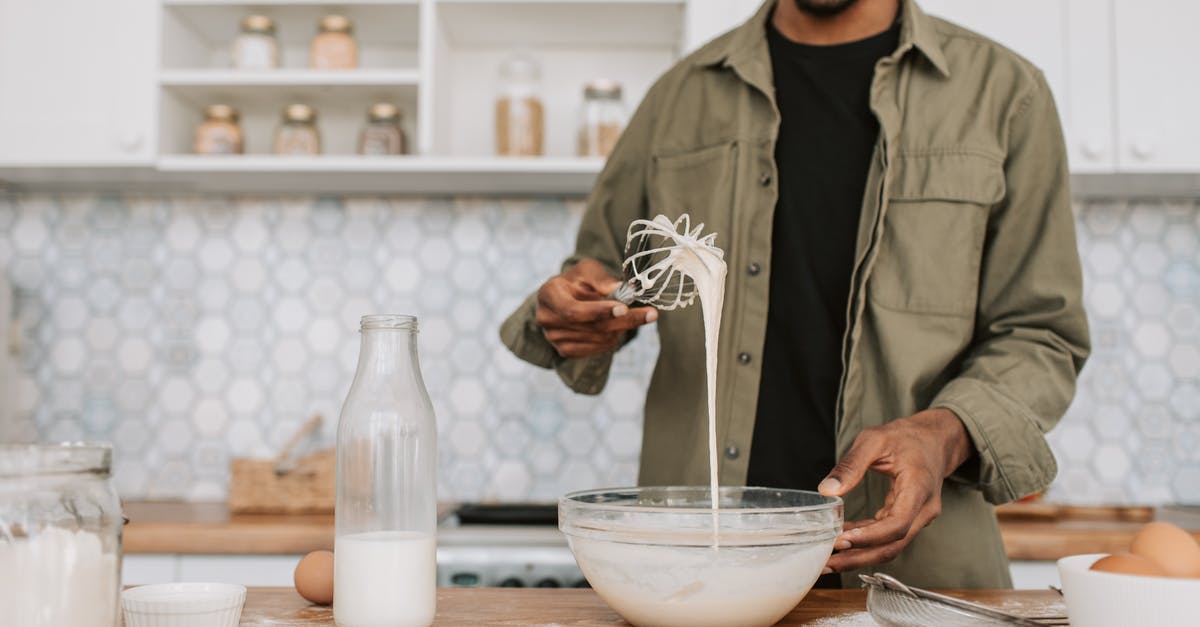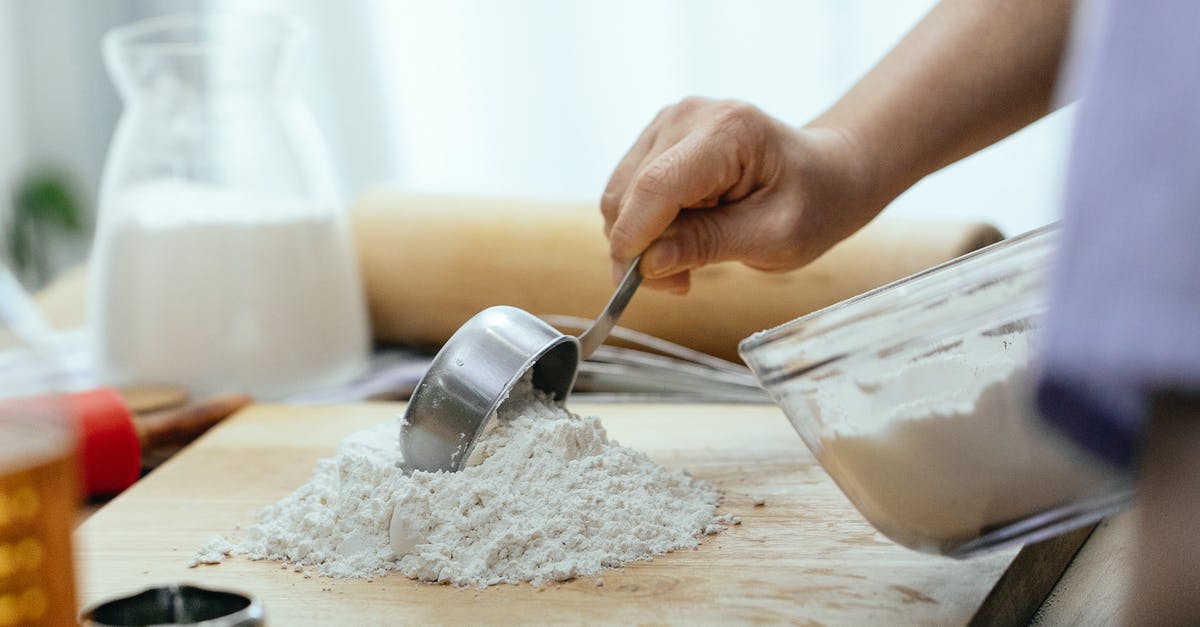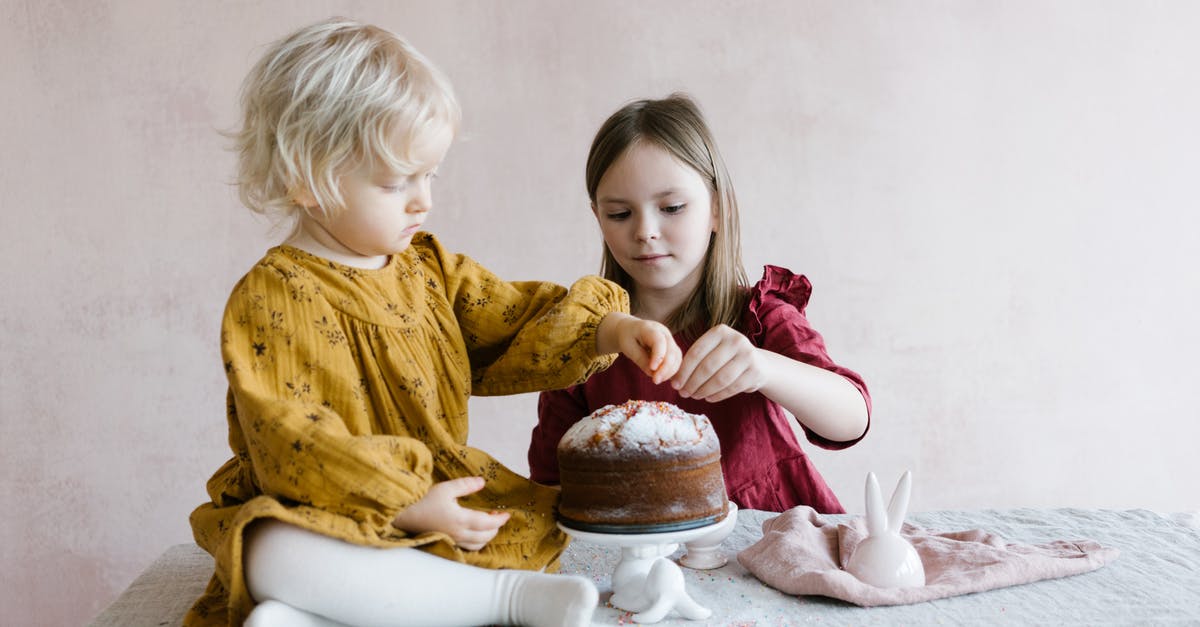Cake batter consistency

In winter my cake batter turns into a hard ball as opposed to in warmer months. I always add more milk and try to bring it to the right consistency for baking. But I think this affects taste. If so what other tricks are there to solve this problem? The recipe is:
- 225g Butter
- 225g Castor sugar
- 4 eggs
- 2 teaspoons vanilla
- 200g plain flour
- 25g cocoa powder
- 2 teaspoons baking powder
- 2 tablespoons milk (I usually need more)
- 1/2 teaspoon baking soda
Best Answer
The temperature of the ingredients is very important when making cake. You will have problems if you start from cold ingredients. I'm afraid that there are no good solutions if you don't have a warm room, all work arounds are quite laborious.
Microwaving the butter is not a good solution. It is a very uneven method of heating. You always end up with too-hard spots and melted spots beside the somewhat softened butter.
The proper way to have butter at the correct consistency is to keep it for at least overnight in an environment which is between 20 and 30 degrees Celsius, and has ambient heat. Putting it on top of a working oven and similar is problematic. If you don't have a room in your house which is at that temperature, you might consider making a water bath for your butter. Warm a Dutch oven with water in the stove until it reaches 30 Celsius, pack the butter in a smaller container, float it in the Dutch oven. Pack the whole thing in a few blankets. It should soften the butter overnight without getting too cold (you said your room doesn't fall below 10 degrees).
A workaround is to cut up the butter into very thin pieces (2-3 mm) and then put cream them with the sugar more than usual. The friction from the mixer will warm it up. This can work well if you have a stand mixer, but if you are doing it with a hand mixer, you'll need to stand there for 15-20 minutes just beating the butter. A water bath might help, but you really have to pay lots of attention not to melt the butter.
You can also consider replacing the butter. Shortening and margarine are much more beatable at low temperatures than butter. You'll get worse taste though, and some change in texture. You have to use a solid fat, not an oil. If you use a margarine, use a full-fat one, not reduced-fat spreads.
The butter is your most obvious problem, but you'll never get perfect results if your eggs are cold. The texture might be good enough for you when you bake with cold eggs; I've seen many bakers who don't mind it. But if you are really picky about your cake quality, you also need to warm the eggs overnight. Alternatively, you can quickly warm them in a water bath after breaking.
Adding milk or other liquids is counterproductive. It will change the texture of the finished cake a lot. Your recipe is a slightly modified pound cake, standard pound cake recipes don't have liquid (and neither do many other cake types). The only reason for dairy I can imagine there would be to add some acid for the baking soda to work - but then it should be buttermilk or yogurt, not milk. The more liquid you add, the less cakelike and more quickbreadlike your result will be.
Pictures about "Cake batter consistency"



Quick Answer about "Cake batter consistency"
The perfect consistency of pound cake batter is thick, kind of like pancake batter. It's okay if it's a little clumpy, you might see granules of butter but they will melt when it's baked.Is cake batter runny or thick?
A cake batter should be fluffy. This means that the batter is aerated and will rise when baked. Secondly, it shouldn't be overly thick or overly runny. A thick batter makes a dense, heavy, and stiff cake.What should cake batter texture be like?
Cake batter should be quite fluffy but thick. It should not be runny or watery, but very puffy-like. Also, when you taste cake batter, it has to be sweeter than what you want, as baking does remove a lot of the sweetness as the water evaporates.What consistency should batter mix be?
It should be the consistency of single cream. Cover the bowl and leave the batter to stand in a cool place for about 30 mins \u2013 this allows the starch grains in the flour to soften and give a lighter batter. If after standing, the batter has thickened too much add a splash of milk to thin it down.What if cake batter is too thick?
Batter viscosity is important here, because a batter that is too thin will allow too much bubbling out, but a batter that is too thick may not rise adequately under the weight. (Thin batters will obviously thicken during baking, so leavening has to survive until batter viscosity increases enough to create structure.)Cake Batter Consistency | How Cake Batter Should Be? | Baking Tips for Cakes | Ribbon Stage | Cakes
More answers regarding cake batter consistency
Answer 2
@rumtscho provides some excellent and very useful information. I would definitely suggest incorporating his methods/techniques into your cake making.
However, I looked at this from another angle. If your cake turns out to your liking in warmer weather and you only experience the issue during colder weather, humidity may be the culprit.
Where I live, in cool/cold weather, almost without fail the humidity is lower - sometimes unbelievably low. So what I am suggesting is that you place a small pan of water in your oven while baking your cake. I usually put the pan of water in when the oven is preheating and leave it in until I remove the cake. Do not put the pan of water directly under your cake as it can impede proper browning on the bottom.
Answer 3
I would suggest that you invest in an oven thermometer to make sure it is maintaining the correct temperature in cold weather as opposed to warm. A cake baked at too low a temperature will often not rise properly and be hard.
Sources: Stack Exchange - This article follows the attribution requirements of Stack Exchange and is licensed under CC BY-SA 3.0.
Images: Vlada Karpovich, Katerina Holmes, Mikhail Nilov, Karolina Grabowska
